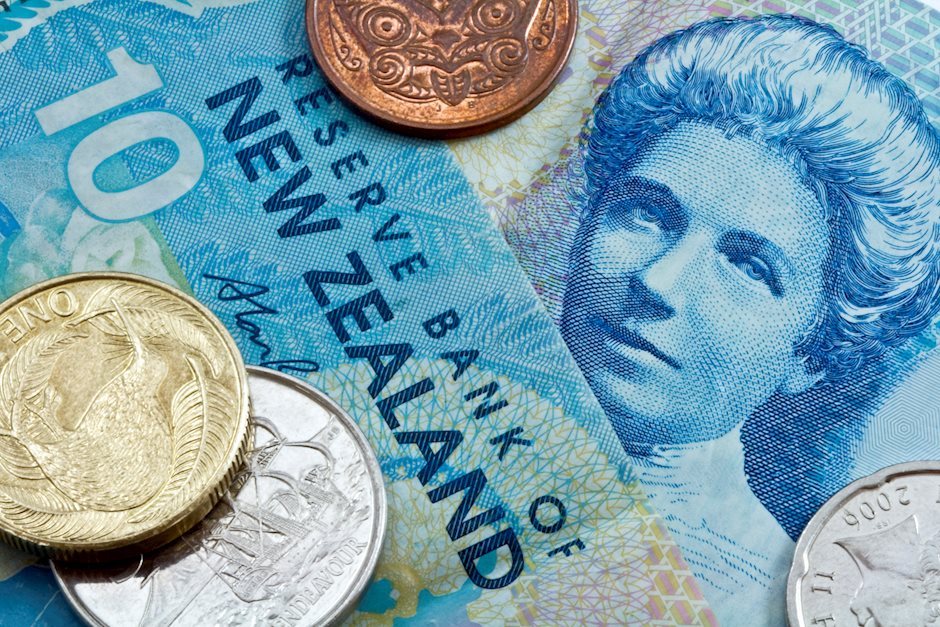NZD/USD jumps to near 0.6200 with Fed policy on the horizon
- NZD/USD climbs to near 0.6200 with the Fed policy meeting taking center stage.
- Traders raise bets supporting the Fed interest rate cuts by 50 bps to 4.75%-5.00%.
- The RBNZ is expected to cut interest rates in the November and December policy meetings.

The NZD/USD pair refreshes a weekly high of 0.6200 in Monday’s New York session. The Kiwi asset strengthens as the US Dollar (USD) has been hit hard by growing speculation that the Federal Reserve (Fed) would start the policy-easing cycle aggressively in its monetary policy meeting on Wednesday.
The US Dollar Index (DXY), which tracks the Greenback’s value against six major currencies, tumbles below 100.70. According to the CME FedWatch tool, the likelihood of the Fed reducing the key interest rates by 50 basis points (bps) rose to 65% from 30% a week ago.
Market expectations for Fed sizable rate cuts have been prompted by the slower-than-expected United States (US) Producer Price Index (PPI) data for August, published last week. Annual headline producer inflation came in lower at 1.7% than estimates of 1.8% and July’s print of 2.1%.
Before the Fed’s policy announcement, investors will focus on the US Retail Sales data for August, which will be published on Tuesday. The Retail Sales data, a key measure of consumer spending, is estimated to have grown at a slower pace of 0.2% from 1% in July. A sharp slowdown in households’ spending momentum would weigh on the US Dollar.
Meanwhile, the New Zealand (NZD) performs strongly against the US Dollar despite the Reserve Bank of New Zealand (RBNZ) is expected to cut interest rates in all monetary policy meetings remaining this year. Investors expect the RBNZ to maintain a dovish interest rate guidance due to growing economic concerns.
New Zealand Dollar FAQs
The New Zealand Dollar (NZD), also known as the Kiwi, is a well-known traded currency among investors. Its value is broadly determined by the health of the New Zealand economy and the country’s central bank policy. Still, there are some unique particularities that also can make NZD move. The performance of the Chinese economy tends to move the Kiwi because China is New Zealand’s biggest trading partner. Bad news for the Chinese economy likely means less New Zealand exports to the country, hitting the economy and thus its currency. Another factor moving NZD is dairy prices as the dairy industry is New Zealand’s main export. High dairy prices boost export income, contributing positively to the economy and thus to the NZD.
The Reserve Bank of New Zealand (RBNZ) aims to achieve and maintain an inflation rate between 1% and 3% over the medium term, with a focus to keep it near the 2% mid-point. To this end, the bank sets an appropriate level of interest rates. When inflation is too high, the RBNZ will increase interest rates to cool the economy, but the move will also make bond yields higher, increasing investors’ appeal to invest in the country and thus boosting NZD. On the contrary, lower interest rates tend to weaken NZD. The so-called rate differential, or how rates in New Zealand are or are expected to be compared to the ones set by the US Federal Reserve, can also play a key role in moving the NZD/USD pair.
Macroeconomic data releases in New Zealand are key to assess the state of the economy and can impact the New Zealand Dollar’s (NZD) valuation. A strong economy, based on high economic growth, low unemployment and high confidence is good for NZD. High economic growth attracts foreign investment and may encourage the Reserve Bank of New Zealand to increase interest rates, if this economic strength comes together with elevated inflation. Conversely, if economic data is weak, NZD is likely to depreciate.
The New Zealand Dollar (NZD) tends to strengthen during risk-on periods, or when investors perceive that broader market risks are low and are optimistic about growth. This tends to lead to a more favorable outlook for commodities and so-called ‘commodity currencies’ such as the Kiwi. Conversely, NZD tends to weaken at times of market turbulence or economic uncertainty as investors tend to sell higher-risk assets and flee to the more-stable safe havens.
Author

Sagar Dua
FXStreet
Sagar Dua is associated with the financial markets from his college days. Along with pursuing post-graduation in Commerce in 2014, he started his markets training with chart analysis.

















